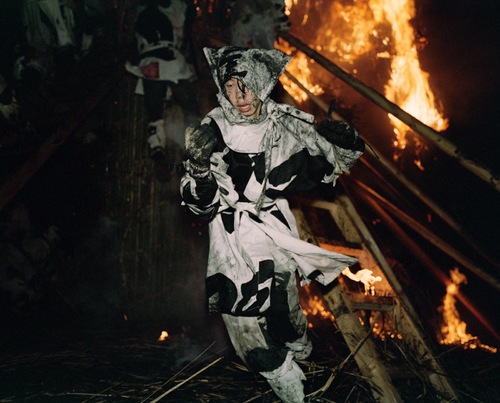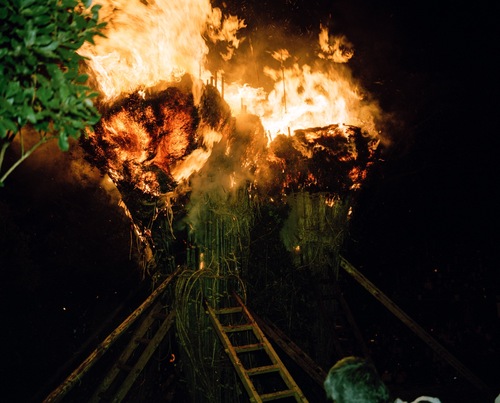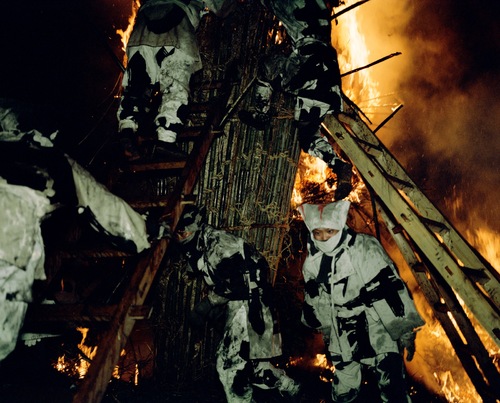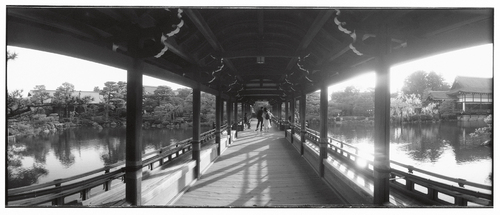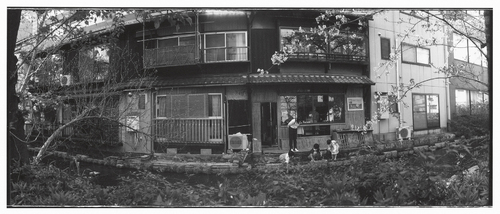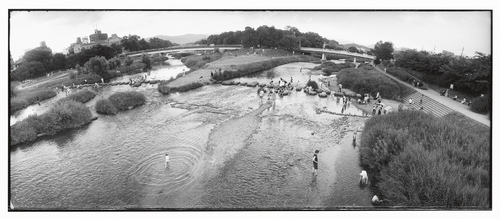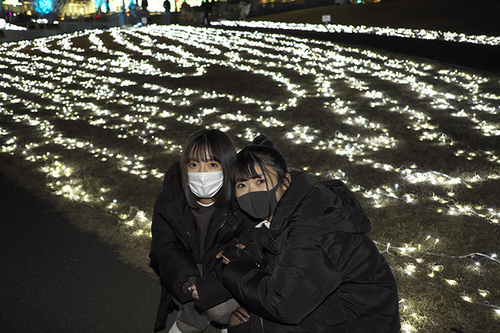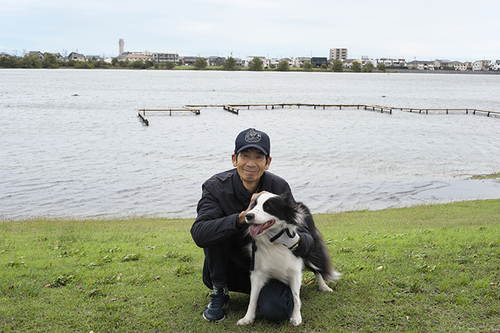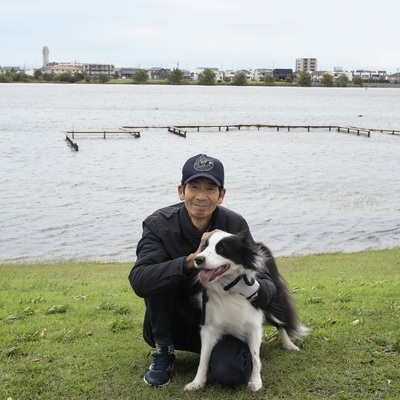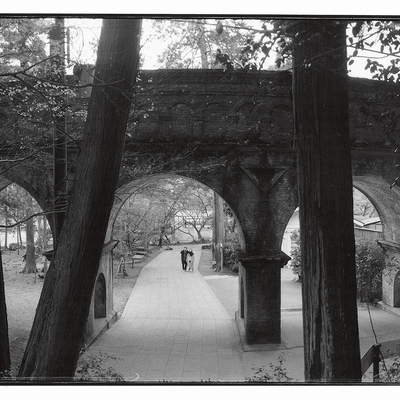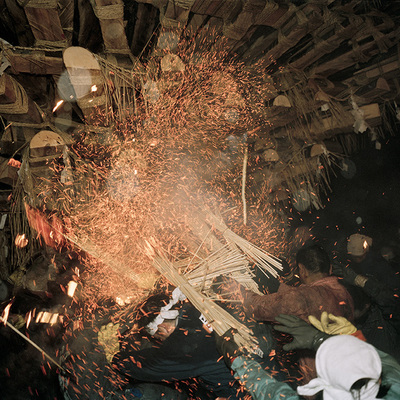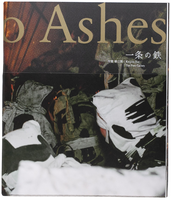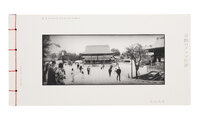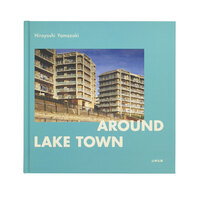This is Our Land, Vol.II
Zen Foto Gallery is pleased to present “This is Our Land, Vol. II”, an exhibition of photographs by Hiroyoshi Yamazaki, Takeshi Takeda, and Keijiro Kai from May 9 (Friday) to June 21 (Saturday), 2025. This exhibition is the second installment of the “This is Our Land” group exhibition held at our gallery in 2021, which focused on the relationship between people and places that have a strong power like a magnetic field to attract people and continue to have a great impact on them. We would be delighted if you would join us for a talk event by the three artists and an opening reception on Saturday, May 10.
Hiroyoshi Yamazaki “Around Lake Town”
Hiroyoshi Yamazaki, a resident of Saitama Prefecture, has engaged in a long-term photographic documentation of Koshigaya Lake Town, beginning in 1997, before the commencement of the Lake Town project in Koshigaya City, to the present. His series "Around Lake Town" offers a glimpse into the transformation of the new town, which was developed around the Ōsagami Retention Basin and the Aeon Mall, into the vibrant community that we see today.
“Aeon Lake Town” is a huge shopping mall that strongly stimulates the desire to consume. A large number of customers flock in on weekends, even from far away, making Koshigaya the most visited place in Saitama Prefecture. This mall is clearly the reason why people are attracted to visit this city. However, while Aeon is undoubtedly convenient, there is a sense that something is missing. My photography at Lake Town is driven by curiosity: Is Lake Town sustainable? Having once been reset as cleared land, Lake Town will soon celebrate 20 years since the town was first opened. What will the landscape look like in the next 20 years?
— Hiroyoshi Yamazaki
Takeshi Takeda “A Kyoto Panorama”
Takeshi Takeda, a photographer based in Tokyo who is originally from Kyoto, has traveled to China, India, and other places with a rich historical heritage. There, he has sought to understand the roots of Japanese spiritual culture and has photographed the people who live there. He has also been thinking about how to photograph his hometown Kyoto, which has a long history as the capital of Japan. Inspired by an old Soviet panoramic camera he encountered during the Coronavirus pandemic, he compiled 100 black-and-white panoramic landscapes for this project. For this exhibition, he has selected original prints from these 100 works to be displayed.
It is said that five hundred years ago, the master swordsman Tsukahara Bokuden composed a poem in the garden of a temple called Hensho-ji in Sagano, Kyoto. The poem says, “In the pond of Hirosawa, the moon does not think about how it is reflected [in the water], it is simply being reflected; and the water does not think about how it is reflecting [the moon], it simply reflects.” This master swordsman, who lived during the Warring States period, expressed the life-and-death fight with real swords in the form of the moon and water blending into each other without being aware of the other. This poem suggests a way of looking beyond the boundaries of self and others to understand life from within, which could be seen in the manner of photography. The word “photograph” originated in Europe and means “light” [photo] and “drawing” [graph], but it was translated as “shashin” [sha means “reflect”; shin means “truth” or “reality”] when it was introduced to Japan. Perhaps there was something in the sensibilities of the Japanese people at the time that made them feel more comfortable with the word “shashin” [true reflection of reality] than the word “koga” [light drawing]. What is the world? What is photography? I felt that the inner voice of my soul led me back to my hometown and further into the source of my Japanese and, consequently, my oriental sensibilities.
— Takeshi Takeda
Keijiro Kai “Ashes to Ashes”
Keijiro Kai is a photographer who has been photographing traditional fighting festivals held in various parts of the world before the modern concept of sports was born, while immersing himself in such festivals, and has produced works that delve into the essential question about “human life” with his photographs. For this exhibition, he will present “Ashes to Ashes”, his latest work, photographed between 2018 and 2023 at the Toba Fire Festival held at the Toba Shimmeisha Shrine in Nishio, Aichi Prefecture, which is said to have a history of 1,200 years. This work will also be exhibited in his solo exhibition “Down to the Bone”, the main program of the Kyotographie International Photography Festival, which will be held from April 12 to May 11, at Kurochiku Makura Building, Kyoto.
Fire never ages or grows mossy — it is always old, new, and perpetual. For 1,200 years the same fire has emerged every year and raged through this town. The participants are dressed in the traditional costumes passed down from their ancestors, crafted from narrow nobori flags — they unknowingly establish a connection with the past as they immerse themselves in a fire identical to that witnessed 1,200 years ago. In this place, the concept of time, which is imperceptible, becomes interconnected with the chaos, and the fundamental human desire for life, the history of how we live and how we have lived, as well as the future of human existence, all are intertwined.
— Keijiro Kai
